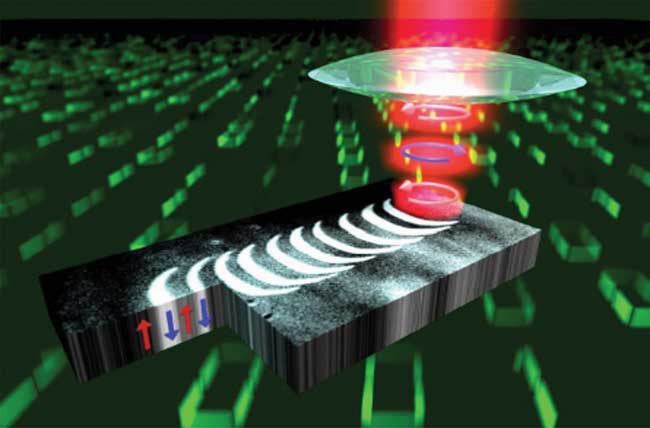The use of ultrafast lasers and bandgap materials can transform material properties — promising potentially big payoffs in sustainability.
 Ultrafast lasers can do a lot, including create a room-temperature superconductor. That type of material transformation is just one emerging area of ultrafast photonics. Today, new ultrafast photonics applications found in lasers and sensors enable systems to see deep into tissue and improve radar performance. Tomorrow, the technology could combat climate change, via more energy-efficient magnetic polarity switching, by transforming ceramics into room-temperature superconductors and more.
An example of a new use of ultrafast photonics improves the performance of radio-frequency (RF) signal processing. This is critical to building better radar and communication systems that must operate at frequencies in the hundreds of gigahertz. The enhanced performance arises because the system makes optimum use of photonic and acoustic components, according to Aleem Siddiqui, a research and development engineer at Sandia National Laboratories in Albuquerque, N.M.
“You have the best of everything. You’re using the best properties of light. You can shuttle it around long distances with low losses. The nice thing about the acoustic domain is that the frequencies are low compared to optical frequencies. To get certain filtering bandwidths, it’s a lot simpler because of the lower relative frequencies,” said Siddiqui.
He was lead author of a Sandia group’s April 2017 SPIE Ultrafast Bandgap Photonics II conference paper, “Toward High Fidelity Spectral Sensing and RF Signal Processing in Silicon Photonic and Nano-Optomechanical Platforms.” The researchers used a chip-scale nano-optomechanical system to make high-performance bandpass filters. This technology could create multichannel filters with narrower channels and less loss than possible with current methods, the group stated in its paper.
Ultrafast lasers can do a lot, including create a room-temperature superconductor. That type of material transformation is just one emerging area of ultrafast photonics. Today, new ultrafast photonics applications found in lasers and sensors enable systems to see deep into tissue and improve radar performance. Tomorrow, the technology could combat climate change, via more energy-efficient magnetic polarity switching, by transforming ceramics into room-temperature superconductors and more.
An example of a new use of ultrafast photonics improves the performance of radio-frequency (RF) signal processing. This is critical to building better radar and communication systems that must operate at frequencies in the hundreds of gigahertz. The enhanced performance arises because the system makes optimum use of photonic and acoustic components, according to Aleem Siddiqui, a research and development engineer at Sandia National Laboratories in Albuquerque, N.M.
“You have the best of everything. You’re using the best properties of light. You can shuttle it around long distances with low losses. The nice thing about the acoustic domain is that the frequencies are low compared to optical frequencies. To get certain filtering bandwidths, it’s a lot simpler because of the lower relative frequencies,” said Siddiqui.
He was lead author of a Sandia group’s April 2017 SPIE Ultrafast Bandgap Photonics II conference paper, “Toward High Fidelity Spectral Sensing and RF Signal Processing in Silicon Photonic and Nano-Optomechanical Platforms.” The researchers used a chip-scale nano-optomechanical system to make high-performance bandpass filters. This technology could create multichannel filters with narrower channels and less loss than possible with current methods, the group stated in its paper.
Member Exclusive: To read the complete article, please Login or Register